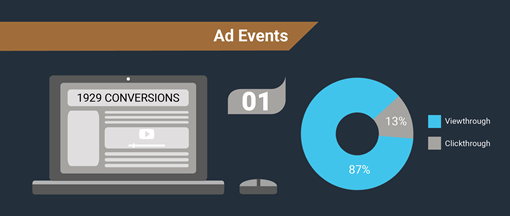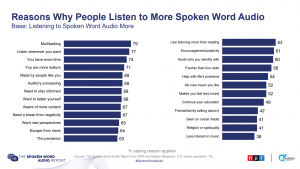These days, most marketers understand the value of attribution as it relates to measuring campaign results. However, today’s attribution models vary widely in terms of sophistication and effectiveness. Last-click attribution – in which all credit is given to the last click on the path to conversion – remains a popular methodology, despite its serious shortcomings. According to comScore, only 16 percent of people actually click on display ads in a given month. That’s a whopping 84 percent of consumers you’re disregarding if you rely on clicks alone.
Furthermore, last-click attribution ignores the importance of every ad exposure other than the final one that leads to a purchase. An analysis of more than 12,000 conversions across various campaigns and verticals found that most people have to see an ad 10 times before they actually make a purchase. This simple finding underscores the importance of tracking view-through conversions in addition to click-throughs.
A click-through conversion occurs when a person clicks on an ad and then converts. A view-through conversion accounts for instances in which a person has seen your ad but not clicked on it, yet later converts. This metric has become increasingly important as today’s informed shoppers have become more likely to spend time doing research and comparing products before making a purchase. In fact, our analysis found that the conversions of the highest-converting ad exposure (10 ad events, resulting in 2,734 conversions) were entirely the result of view-throughs.
If your company is employing a last-click attribution model, you are losing visibility on a massive amount of conversions as well as a huge opportunity to optimize your ad spend. Employing a multi-touch attribution model that accounts for view-through conversions will help you gain an accurate understanding of the buyer’s journey, that ever-important path leading up to a purchase. Without a complete understanding of this journey, you’re likely to discount some valuable ad exposures that didn’t necessarily prompt a click, but drove a conversion all the same. Shifting your budget based on incorrect data will almost certainly have a significantly negative impact on your company’s conversion rate, revenue and overall growth.
Every touch point on the path to conversion has value, and the best attribution approaches are able to identify how channels support one another along the buyer’s journey, regardless of whether or not people are clicking. The more nuanced your attribution approach, the better you will be able to make smart decisions as it relates to campaign optimization.
![Why You Shouldn’t Be Using Last-Click Attribution [Infographic]](https://www.onlinesalesguidetip.com/wp-content/uploads/2016/08/Why-You-Shouldnt-Be-Using-Last-Click-Attribution-Infographic.png)
(19)







